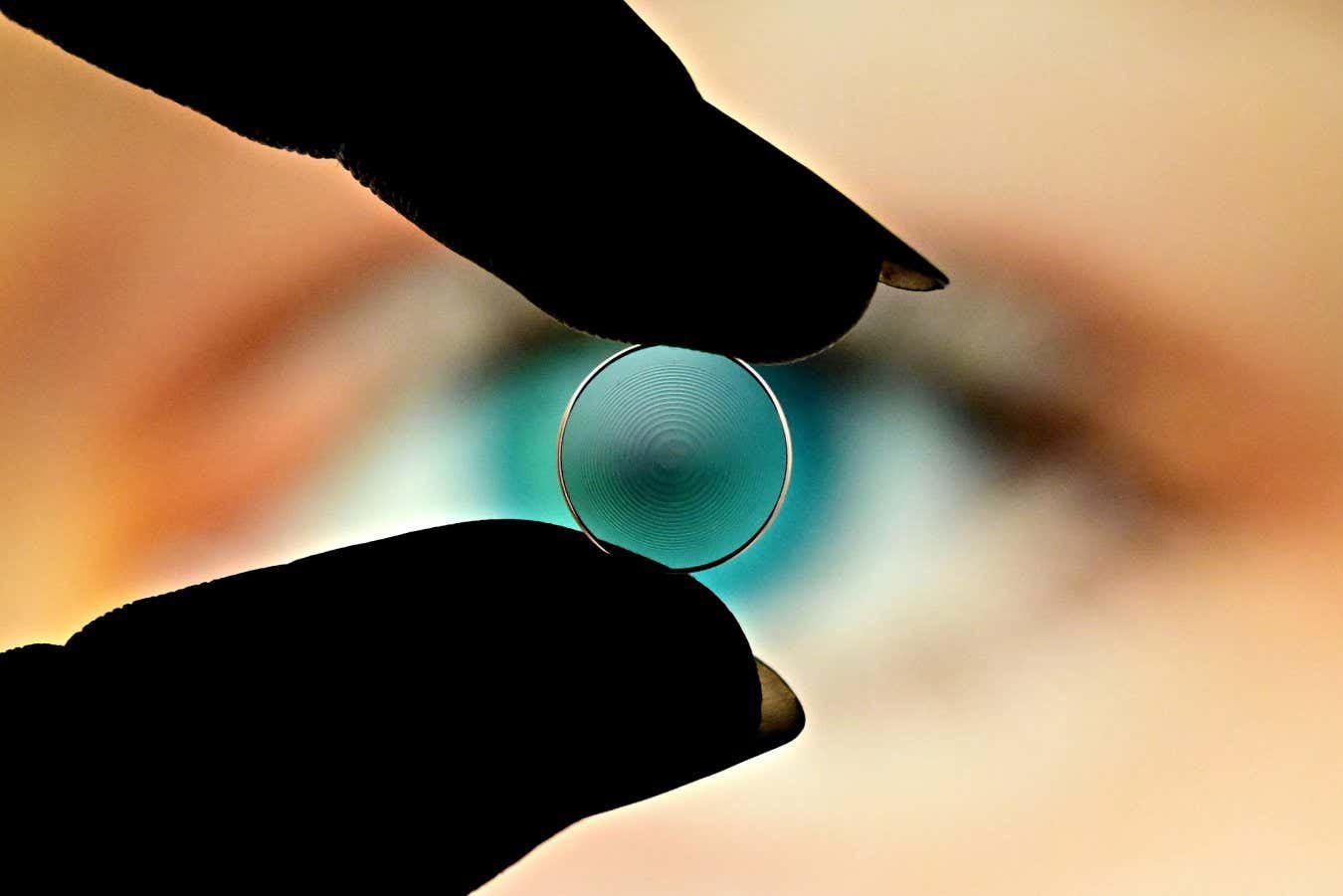
A contact lens inscribed with the spiral design
Laurent Galinier
Lenses featuring a trippy, spiral design could offer an alternative to traditional multifocal lenses. They seem to produce clearer images than standard multifocals, even in dim light.
The lenses were created by inventor Laurent Galinier. When Bertrand Simon at the Institut d’Optique Graduate School in France met Galinier through a scientific collaboration, he immediately wanted to test the lenses in the lab.
The lens is round like a conventional contact lens but it has a neatly coiled spiral created with a lathe on its surface. This spiral shape modifies the path that light rays take through the lens, meaning the lens doesn’t have a single focal point but several – some closer to the lens and some further away from it.
Exactly how the spiral shape does this is unclear, but Simon says it seems to twist the light rays and create optical vortices – like mini tornadoes of light – that somehow interact with each other.
In the lab, Simon and his colleagues analysed laser light that passed through the spiral lenses and simulated the process on a computer. In a head-to-head comparison with a conventional multifocal lens, the spiral lens offered more clarity and detail when lots of light passed through it, and it still worked well under dim light conditions.
Because of this, the spiral lenses might be suitable under a range of lighting conditions: for instance, they could be useful for people who use multifocal lenses while driving at night, says Simon. He tried a pair of spiral contact lenses himself and says that, although the rigid material was uncomfortable when touching the eye, it saved him the effort of having to take his glasses off to look at his phone. With the spiral lenses he could see the screen clearly.
James Wolffsohn at Aston University in the UK says that many people experience problems focusing on nearby objects even if their distance vision has been corrected. Innovations like the spiral lens are promising he says, but how much of a difference the new technology can really make for people can only be proven with clinical trials.
Simon says that it may be possible to create more compact cameras by replacing some of their lenses with spiral lens versions, but the team first wants to do more tests to explore the underlying science of spiralling light.
Topics:

